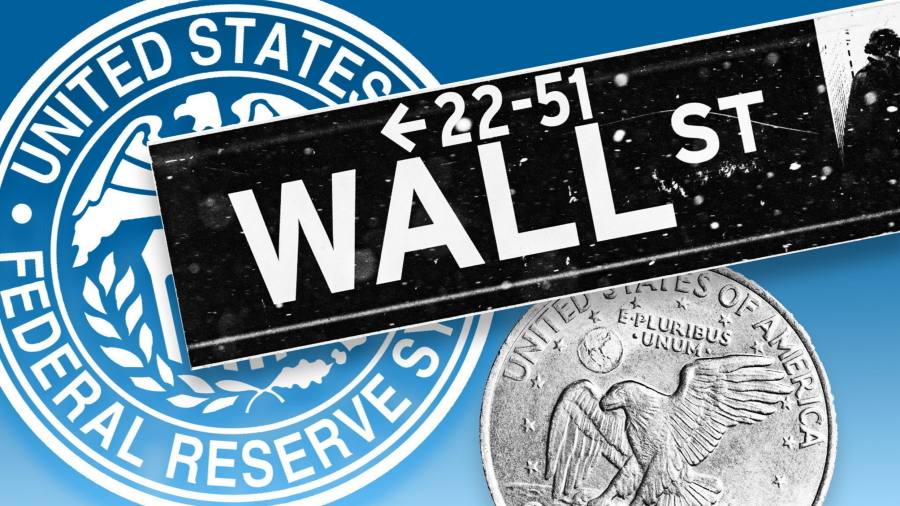Receive free US Dollar updates
We’ll send you a myFT Daily Digest email rounding up the latest US Dollar news every morning.
Big investment banks are turning more bearish on the dollar as expectations grow that a “soft” economic landing will reduce the need for the US Federal Reserve to raise interest rates much further.
Morgan Stanley, JPMorgan Chase, Goldman Sachs and HSBC are among the lenders to have either scrapped bullish dollar calls or forecast further declines for the currency in the wake of last week’s unexpectedly large drop in US inflation.
The US currency sank to a 15-month low against an index of rivals following last Wednesday’s figures, which bolstered expectations that the Fed could soon end its campaign of monetary tightening without tipping the world’s largest economy into recession.
“Signs of further improvement in the global growth-inflation mix and a US soft landing sow the seeds for US dollar weakness ahead,” analysts at HSBC said in a note to clients on Tuesday, adding that the currency was likely to break out of the tight range in which it had traded since late 2022.
The world’s de facto reserve currency has seesawed for much of the year, strengthening in February after a flurry of alarming inflation data before sinking in March and April following the collapse of several US regional banks.
Goldman Sachs analysts also said the recent move was likely to be the start of a bigger decline. “There’s more where that came from,” the bank wrote to clients on Friday. “We think this can extend in the near term.”
Morgan Stanley’s currency strategists on Monday shifted to a neutral position on the greenback from overweight while JPMorgan’s team on Friday closed its recommended dollar trades after economic data that they said provided “a gut check” to bullish dollar thinking.
Trading in interest rate futures implies a quarter-point rate rise is priced in for the Fed’s meeting next week, but tentative bets on a further September rise subsided following the data, implying a 14 per cent probability, according to CME’s FedWatch tool, compared with 22 per cent a week ago.
Traders emboldened by June’s relatively benign inflation figures are growing increasingly optimistic that the US economy will avoid a recession altogether. Just a fifth of investors now expect a “hard landing” where economic output shrinks, compared with 68 per cent who expect continued, if meagre, growth, according to Bank of America’s latest fund managers’ survey, sent to clients on Tuesday.
“With better inflation data, the soft landing camp is in the ascendancy, and that’s the environment where the dollar does least well out of the three scenarios,” said Alan Ruskin, chief international strategist at Deutsche Bank. The currency typically benefits from higher US interest rates but also tends to gain in periods of global recession when investors seek the safety of US assets.
The speed of the dollar’s recent decline took some by surprise. The currency was “falling somewhat faster than relative interest rate trends, or current economic data, would seem to justify”, said Kit Juckes, a currency strategist at Société Générale, noting that the greenback’s weakness had pushed the euro above $1.12 for the first time since Russia full-scale invasion of Ukraine in February last year.
Read the full article here



